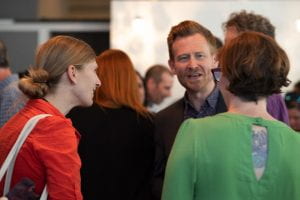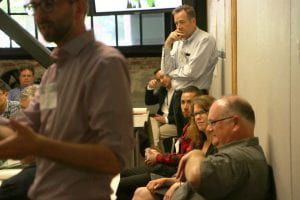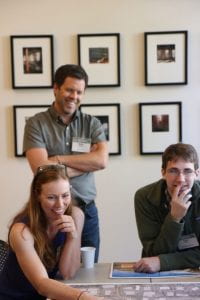
The 2019 National Urbanism Next Conference brought together over 500 people, including a great mix of private sector, public sector, academic and nonprofit representatives from a variety of disciplines. The three day event featured discussions on a wide variety of topics, with a concentrated focus on collaborative solutions for how emerging technologies can be harnessed to achieve desired outcomes. Many important and interesting points were made, but here are a selection of our key takeaways.
“Equity is not a commitment. It’s a practice.” Hana Creger with The Greenlining Institute spoke about racial equity and mobility, outlining the past, present, and the future. To arrive at a more equitable future, we have to start now, in the present, by intentionally building equity into every stage of planning, every pilot project, and every program. That means not only starting with the development of a shared vision, but also identifying meaningful and measurable equity outcomes and everything in between. For more information and guidance, check out The Greenlining Institute’s Autonomous Vehicle Heaven or Hell? Creating a Transportation Revolution That Benefits All and the Mobility Equity Framework. As Hana so eloquently stated, “Equity is not a commitment—it’s a practice.” Let’s make it so.

“Transit backbone = Best way to get around town.” Bruce Schaller (Schaller Consulting) reminded us that even with all the new mobility options emerging, we cannot lose sight of transit and what a crucial role it plays. The geometry of our streets is essentially fixed, and we have to focus on maximizing that space by moving people as efficiently as possible—that means more people in fewer vehicles. And it’s not only about geometry. Public transit is linked to density, which is linked to innovation, which is linked to productivity, which is linked to opportunity, as Bruce outlined in his presentation. Transit must be the backbone and all other mobility options should support transit networks. Undertaking assessments of which new mobility options work best in which densities, morphologies, and socioeconomic contexts will help cities figure out how to promote new mobility services in areas where they are most useful and discourage their use in areas where they contribute to increased congestion and greenhouse emissions and compete with transit.

“Why do we allow the delivery of a box with a single nail clipper during the peak hour? Why do you need to ship a single tomato during rush hour?” Sucharita Kodali with Forrester Research gave an eye-opening presentation on the growth of e-commerce and the ways in which free shipping has distorted the market, resulting in negative externalities along the way—like a box with a single nail clipper being transported during the peak hour. How do we get the most efficiency from the street for both goods and passenger trips? Planners have to incentivize beneficial behavior and disincentivize congestion-inducing deliveries of non-essential items during peak hours.

Data, data, data. There is no doubt that data was a still hot topic this year, as it was last year, but the conversation is evolving. Last year, a lot of the discussion centered around the need for data, as well as the impediments to sharing it. In the past year, progress has been made in the development of shared data standards, with the Los Angeles Department of Transportation having taken a lead in this field through the creation of the Mobility Data Specification (MDS). Concerns about data privacy and security are still taking center stage, with lots of related discussions about how fine-grained the data needs to be in order for cities to be able to answer the questions they have to create informed policies. What is usable, what is useful, and what is extraneous? While the details have yet to be worked out—and without a doubt, the upcoming year will see continued developments in this area—coming to a consensus on shared data standards will be critical to the development of public-private partnerships.

Collaboration is key. This one is two-fold. The first part is about the need for collaboration between the private and public sectors in the form, of yes, PPPs or public-private partnerships. We also need to be keeping lines of communication open. If anything is certain at this moment in time, it is that the field is incredibly dynamic and constantly evolving. At last year’s conference, e-scooters were barely on the radar and this year, they were featured in multiple sessions. And that relates to the second point—the built environment disciplines need to be working in tandem and learning from each other. One of the most common refrains we heard from attendees was how valuable it was to hear from people working in a variety of fields and how useful it was to attend sessions that featured a mix of panelists, bringing in a cross-sector perspective.
These are our key takeaways for this year’s conference, but there is so much more to be discussed. We hope you all will join us in the keeping the conversations going throughout the upcoming year and working together to achieve desired outcomes in this era of change. Keep an eye out for the Urbanism Next NEXUS (anticipated launch in Fall 2019), a one-stop-shop to get the latest research, thinking, and discussion about how emerging technology is impacting cities. We look forward to seeing you next year!

